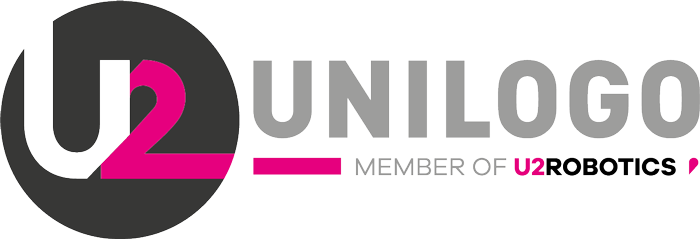Growing competition and the desire to maximise profits means that companies must constantly improve their production process. One way to streamline production is lean manufacturing, which focuses on the customer and eliminates waste of resources. Find out about the principles of lean manufacturing.
Table of contents
- What is lean manufacturing?
- Principles of lean manufacturing and key practices
- Lean manufacturing tools and benefits of implementing the concept
- Lean manufacturing – summary
What is lean manufacturing?
How can the concept of lean manufacturing be explained in a simple way? It is a production management system that is based on the Toyota Production System. According to its principles, the primary goal of any company or enterprise that implements lean manufacturing should be to maximise customer value while eliminating waste of any kind.
This refers both to wastefulness in terms of raw materials or production, as well as wasting employees’ time on unnecessary activities. Any activity that involves company resources and does not add value for the customer is seen as waste in terms of the lean production system. One of the main principles of the Toyota production system is precisely the economical use of all resources.
The term lean manufacturing was first used in 1988 in the publication “Triumph of the Lean Production System. Management Review” by John Krafcik. The author defined an alternative to the popular mass production process.
In the following years, lean thinking was also extended to include the concept of lean management. This concept encompasses only the production itself, but also project management and the way the entire company is managed. At its core is the idea that all employees in an organisation are focused on continually reducing production costs while improving product quality and reducing delivery times.
The basic lean manufacturing principles are defining customer value, defining the value stream for the product, creating conditions for a free flow of materials, introducing a pull system between the customer and supplier and continuous improvement of production. Lean manufacturing stipulates that each customer is both the beginning and end of the manufacturing operation. This is why any optimisation should first and foremost be focused on meeting customer needs.
Principles of lean manufacturing and key practices
As we have already mentioned, lean production system has 5 basic principles. Let us recall them once again. They include defining value, defining the value stream, creating a free flow of materials, establishing a pull system and continuous improvement. We will now briefly discuss each of them.
Defining value is asking yourself what the customer is willing to pay for. When buying a product, the customer wants to pay for what the product offers. Using the example of the cosmetics industry: the customers pay for a cosmetic, for its effects and sometimes for its attractive packaging. They are, however, not interested in the costs of transport, storage, and line changeover. Therefore, project management should be done in such a way that all these processes are reduced to a minimum.
Defining the value stream should start with defining the beginning and end of the process under analysis. It is then necessary to identify where value is added, where unavoidable losses are incurred and where they can be eliminated in the optimisation process.
The lean production system involves optimising the flow of goods to the customer. This includes eliminating unnecessary repackaging or waiting for raw materials to be delivered. This requires a high performance supplier network.
What is the creation of a pull system between the customer and supplier? The principle of lean production is to produce products only when there is demand for them. Overproduction entails increased storage costs, which is obviously a waste of resources. Therefore, whenever possible, companies should only produce when an order has been placed for the products.
According to the fifth principle, lean thinking dictates that the improvement process never really ends. There is always room for improvement in the production process itself or in the way it is managed.
Lean manufacturing tools and benefits of implementing the concept
What lean manufacturing techniques and tools make up the entire production management system? One of the best known principles is Kaizen. The basic thought of the concept is that the continuous involvement of employees and their improvement has a greater impact on the development of the company than occasional, larger improvements.
Other lean manufacturing tools include, for example, the 5S principle and Poka-Yoke. 5S stands for 5 steps: sort, set in order, shine, standardise and sustain. The aim is to make the workplace well-organised and tidy. Poka-Yoke, on the other hand, is designed to eliminate errors. The main idea behind this tool is that it is not the employee who is responsible for the mistake, but the process by which it is possible to make it.
TPM, which stands for Total Productive Maintenance, in turn is designed to ensure that the efficiency of machinery and equipment is maximised. According to its principles, maintenance work is carried out in such a way that the production process is disrupted as little as possible while avoiding the breakdown of machinery or tools.
Lean manufacturing practices also involve value stream creation (VPM) through which data can be collected on the flow of physical components and information. Lean manufacturing also uses the SMED system. It is based on quick changeover of machines and processes, while using a minimum of tools. As a result, production downtime for changeovers is significantly reduced.
Lean manufacturing – summary
We hope that after reading our article, you already know the essence of lean manufacturing. This production management system is based on the principles of the Toyota production system. Its aim is to focus production on meeting customer needs and to eliminate waste of resources of all kinds. The core of lean thinking is also the belief that the improvement process never ends.
The most important lean manufacturing principles are defining value, defining the value stream, creating a free flow of materials, establishing a pull system and continuous improvement. The tools that allow implementing lean manufacturing in your company are: Kaizen, the 5S principle, Poka-Yoke, Total Productive Maintenance, VPM and the SMED system.
If you are interested in purchasing new production equipment that conforms to the lean manufacturing approach, or in adapting your old equipment to this production management system, please visit our website Unilogo and use the contact form. You can be sure that our experts will help you choose a solution that meets all your needs.


